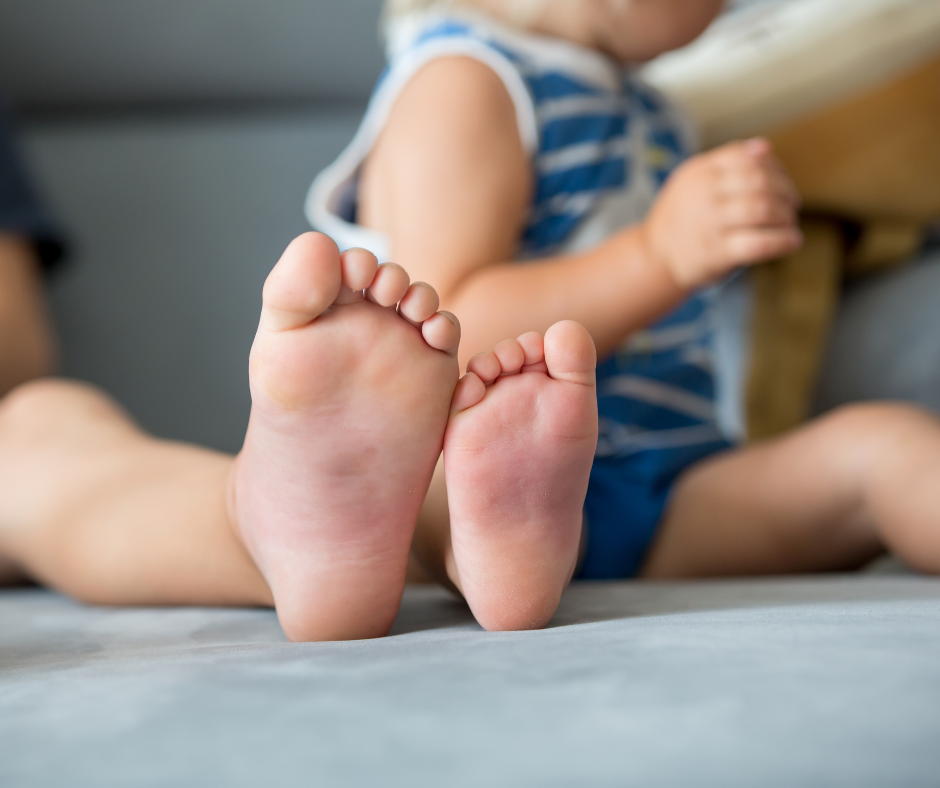How to Treat Foot Deformities in Children

When your child’s feet look a little different, or they’re tripping more than usual, it’s natural to worry. The good news: most pediatric foot deformities are treatable, and many improve with time and simple steps at home. At Clifton Foot & Ankle Center, we see this every day and want you to feel confident about what’s happening, why it’s happening, and how you can help your child move comfortably.
Common Foot Deformities in Children
Here’s a quick guide to the terms you’ll hear most, and what they mean:
- Flat feet: The arch looks flat when standing, but reappears on tiptoes.
- In-toeing and Out-toeing: Feet point inward or outward while walking.
- Toe walking: Walking mostly on the balls of the feet.
- Metatarsus Adductus: The front of the foot curves inward (C-shaped forefoot).
Most of these are painless, whereas others can lead to tripping, fatigue, or shoe-fit issues. Kids’ bones and ligaments are still developing, so what looks concerning at age three may be perfectly normal by seven.
Early Evaluation for Foot Deformities in Children
Start with a simple checklist:
· Does your child have pain?
· Are they avoiding play?
· Do they wear down shoes unevenly or trip frequently?
If you answer “yes” to any of these, schedule an assessment. If your child is active and pain-free, you may only need periodic monitoring. We’ll help you decide what needs attention now and what needs time.
Non-Surgical Treatments for Pediatric Foot Deformities
Most kids respond well to conservative care. Footwear matters: choose lightweight shoes with a wide toe box and a firm heel. For flat feet that ache after activity, custom orthotics can support the arch and reduce fatigue. Gentle stretching for the calves and foot muscles (30 seconds, twice daily) also helps with toe walking and tight Achilles tendons.
For metatarsus adductus, early stretching and guided positioning often do the trick. In some cases, short-term serial casting helps reshape a rigid forefoot. Physical therapy builds balance and strength through exercises such as tiptoe-to-heel walks, single-leg stands, and towel scrunches.
Casting and Bracing
Certain conditions benefit from structured protocols. Clubfoot, for example, is typically treated with the Ponseti method, a series of gentle casts followed by a small tendon release and bracing to maintain correction.
With everything, consistency is key. If your child is prescribed a brace, sticking to the schedule is what protects progress.
How You Can Support Your Child’s Foot Deformity
We recommend keeping movement fun and frequent. We encourage barefoot time indoors on safe surfaces to strengthen intrinsic foot muscles and to have them rotate between two pairs of quality shoes.
And don’t forget to celebrate small wins! Longer play without pain, fewer trips, and better balance are all great signs.
For more foot care facts and advice, consult Dr. Kenneth R. Wilhelm at Clifton Foot & Ankle Center in Fairfax County, Virginia, about any podiatric concerns you’re facing. Set up an appointment today to find relief!






